Here is a solution using functions plot(), polygon() and lines().
set.seed(1234)
df <- data.frame(x =1:10,
F =runif(10,1,2),
L =runif(10,0,1),
U =runif(10,2,3))
plot(df$x, df$F, ylim = c(0,4), type = "l")
#make polygon where coordinates start with lower limit and
# then upper limit in reverse order
polygon(c(df$x,rev(df$x)),c(df$L,rev(df$U)),col = "grey75", border = FALSE)
lines(df$x, df$F, lwd = 2)
#add red lines on borders of polygon
lines(df$x, df$U, col="red",lty=2)
lines(df$x, df$L, col="red",lty=2)

Now use example data provided by OP in another question:
Lower <- c(0.418116841, 0.391011834, 0.393297710,
0.366144073,0.569956636,0.224775521,0.599166016,0.512269587,
0.531378573, 0.311448219, 0.392045751,0.153614913, 0.366684097,
0.161100849,0.700274810,0.629714150, 0.661641288, 0.533404093,
0.412427559, 0.432905333, 0.525306427,0.224292061,
0.28893064,0.099543648, 0.342995605,0.086973739,0.289030388,
0.081230826,0.164505624, -0.031290586,0.148383474,0.070517523,0.009686605,
-0.052703529,0.475924192,0.253382210, 0.354011010,0.130295355,0.102253218,
0.446598823,0.548330752,0.393985810,0.481691632,0.111811248,0.339626541,
0.267831909,0.133460254,0.347996621,0.412472322,0.133671128,0.178969601,0.484070587,
0.335833224,0.037258467, 0.141312363,0.361392799,0.129791998,
0.283759439,0.333893418,0.569533076,0.385258093,0.356201955,0.481816148,
0.531282473,0.273126565,0.267815691,0.138127486,0.008865700,0.018118398,0.080143484,
0.117861634,0.073697418,0.230002398,0.105855042,0.262367348,0.217799352,0.289108011,
0.161271889,0.219663224,0.306117717,0.538088622,0.320711912,0.264395149,0.396061543,
0.397350946,0.151726970,0.048650180,0.131914718,0.076629840,0.425849394,
0.068692279,0.155144797,0.137939059,0.301912657,-0.071415593,-0.030141781,0.119450922,
0.312927614,0.231345972)
Upper.limit <- c(0.6446223,0.6177311, 0.6034427, 0.5726503,
0.7644718, 0.4585430, 0.8205418, 0.7154043,0.7370033,
0.5285199, 0.5973728, 0.3764209, 0.5818298,
0.3960867,0.8972357, 0.8370151, 0.8359921, 0.7449118,
0.6152879, 0.6200704, 0.7041068, 0.4541011, 0.5222653,
0.3472364, 0.5956551, 0.3068065, 0.5112895, 0.3081448,
0.3745473, 0.1931089, 0.3890704, 0.3031025, 0.2472591,
0.1976092, 0.6906118, 0.4736644, 0.5770463, 0.3528607,
0.3307651, 0.6681629, 0.7476231, 0.5959025, 0.7128883,
0.3451623, 0.5609742, 0.4739216, 0.3694883, 0.5609220,
0.6343219, 0.3647751, 0.4247147, 0.6996334, 0.5562876,
0.2586490, 0.3750040, 0.5922248, 0.3626322, 0.5243285,
0.5548211, 0.7409648, 0.5820070, 0.5530232, 0.6863703,
0.7206998, 0.4952387, 0.4993264, 0.3527727, 0.2203694,
0.2583149, 0.3035342, 0.3462009, 0.3003602, 0.4506054,
0.3359478, 0.4834151, 0.4391330, 0.5273411, 0.3947622,
0.4133769, 0.5288060, 0.7492071, 0.5381701, 0.4825456,
0.6121942, 0.6192227, 0.3784870, 0.2574025, 0.3704140,
0.2945623, 0.6532694, 0.2697202, 0.3652230, 0.3696383,
0.5268808, 0.1545602, 0.2221450, 0.3553377, 0.5204076,
0.3550094)
Fitted.values<- c(0.53136955, 0.50437146, 0.49837019,
0.46939721, 0.66721423, 0.34165926, 0.70985388, 0.61383696,
0.63419092, 0.41998407, 0.49470927, 0.26501789, 0.47425695,
0.27859380, 0.79875525, 0.73336461, 0.74881668, 0.63915795,
0.51385774, 0.52648789, 0.61470661, 0.33919656, 0.40559797,
0.22339000, 0.46932536, 0.19689011, 0.40015996, 0.19468781,
0.26952645, 0.08090917, 0.26872696, 0.18680999, 0.12847285,
0.07245286, 0.58326799, 0.36352329, 0.46552867, 0.24157804,
0.21650915, 0.55738088, 0.64797691, 0.49494416, 0.59728999,
0.22848680, 0.45030036, 0.37087676, 0.25147426, 0.45445930,
0.52339711, 0.24922310, 0.30184215, 0.59185198, 0.44606040,
0.14795374, 0.25815819, 0.47680880, 0.24621212, 0.40404398,
0.44435727, 0.65524894, 0.48363255, 0.45461258, 0.58409323,
0.62599114, 0.38418264, 0.38357103, 0.24545011, 0.11461756,
0.13821664, 0.19183886, 0.23203127, 0.18702881, 0.34030391,
0.22090140, 0.37289121, 0.32846615, 0.40822456, 0.27801706,
0.31652008, 0.41746184, 0.64364785, 0.42944100, 0.37347037,
0.50412786, 0.50828681, 0.26510696, 0.15302635, 0.25116438,
0.18559609, 0.53955941, 0.16920626, 0.26018389, 0.25378867,
0.41439675, 0.04157232, 0.09600163, 0.23739430, 0.41666762,
0.29317767)
Assemble into a data frame (no x provided, so using indices)
df2 <- data.frame(x=seq(length(Fitted.values)),
fit=Fitted.values,lwr=Lower,upr=Upper.limit)
plot(fit~x,data=df2,ylim=range(c(df2$lwr,df2$upr)))
#make polygon where coordinates start with lower limit and then upper limit in reverse order
with(df2,polygon(c(x,rev(x)),c(lwr,rev(upr)),col = "grey75", border = FALSE))
matlines(df2[,1],df2[,-1],
lwd=c(2,1,1),
lty=1,
col=c("black","red","red"))









